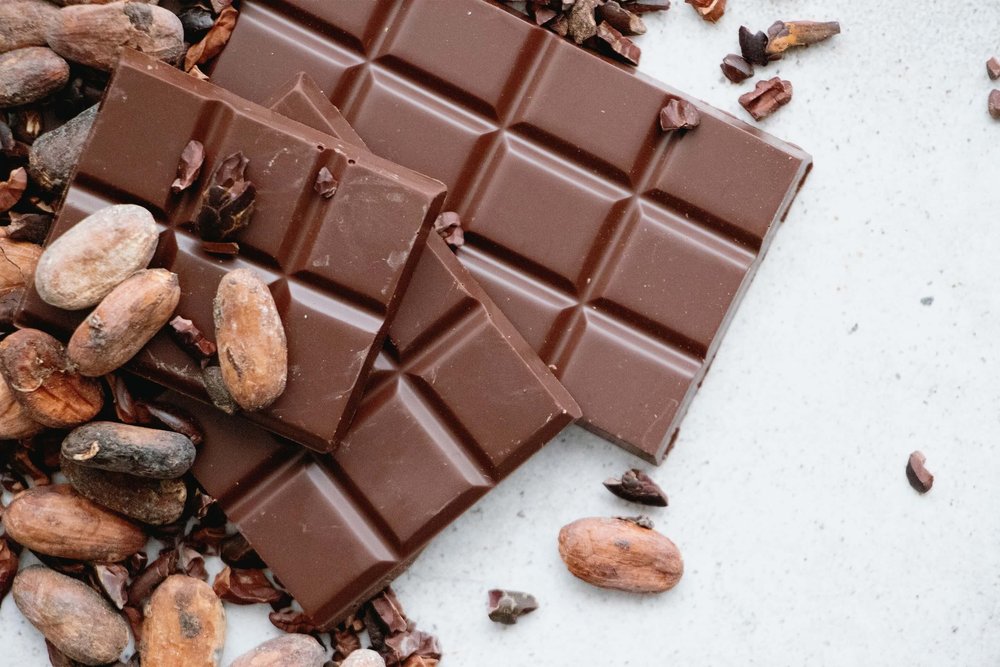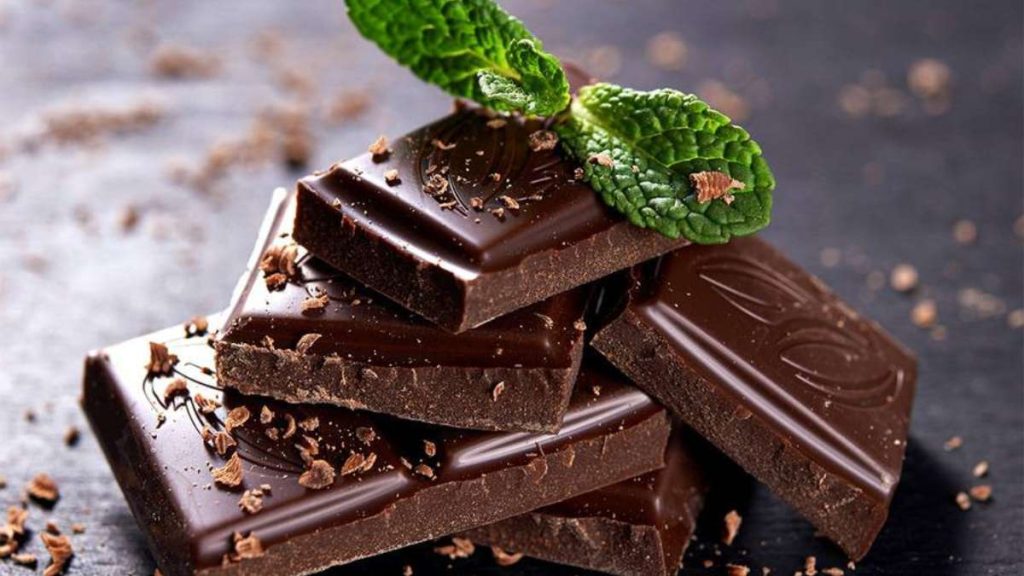Below, you will find some commonly used chocolate terms along with their definitions:
Antioxidants:
Nutrients and enzymes that slow down or prevent tissue cells from oxidizing.
Bittersweet Chocolate:
Dark chocolate contains a minimum of 35% chocolate liquor. While both bittersweet and semi-sweet fall under this definition, traditionally, bittersweet is reserved for chocolate with at least 50% chocolate liquor.
Cacao:
Also known as cocoa. Cocoa beans: seeds from the pod of a Theobroma tree, native to the tropical Amazon forests. Cultivated worldwide in tropical rainforests within 20 degrees latitude of the equator.
Cocoa Nibs:
The center (meat) of the cocoa bean. When ground, the nib becomes chocolate liquor.
Chocolate Liquor:
The ground-up center (nib) of the cocoa bean, known as unsweetened chocolate. Cocoa liquor is extremely bitter and contains no alcohol.
Cocoa Butter:
The fat extracted from the cacao bean or cocoa liquor itself.
Cocoa Powder:
Cocoa solids resulting from pressing cocoa butter out of chocolate liquor. Available in different fat levels, natural or dutched/alkalized. Natural cocoa is the light brown powder resulting from pressing, while dutched or alkalized cocoa powder comes from treating cocoa nibs with alkalizing solutions.
Couvertures:
Chocolate with a very high percentage (at least 30%) of cocoa butter. This type of chocolate, due to its high ratio of cocoa butter, melts and tempers easily, creating a smooth, silky texture. Ideal for tempering and enrobing candies, available in dark, milk, and white chocolate varieties.
Compound:
Also known as confectionery coating. A blend of sugar, vegetable oil, cocoa powder, and other products.
Conche:
A machine used to keep chocolate under constant agitation, aiding in achieving desired flavors and liquefy the refined chocolate mass.
Dark Chocolate:
Made from cocoa liquor, cocoa butter, sugar, lecithin, and vanilla. Optional to add cocoa powder.
Dutch Process:
A treatment used during cocoa powder making, treating cocoa solids with an alkaline solution to neutralize acidity, darkening the cocoa and developing a milder chocolate flavor.
Fat Bloom:
Resulting from inadequate tempering or temperature abuse of properly tempered chocolate. Visible as a dull white film on the chocolate surface with a soft or crumbling texture. A visual and textural defect, but safe to eat.
Flavonoids:
Naturally occurring elements in chocolate, acting as antioxidants that protect the body from aging and damage caused by free radicals.
Ganache:
Made by heating heavy cream poured over chopped dark chocolate, stirring to create a mixture.
Grand Cru Chocolate:
Also known as single-origin chocolate, created with beans from a specific area or region.
Lecithin:
A natural emulsifier used in chocolate to improve flow properties.
Milk Chocolate:
Chocolate with at least 10% chocolate liquor and 12% milk solids, combined with sugar, cocoa butter, lecithin, and vanilla. Optional to add cocoa powder.
Praliné:
A filling made of ground caramelized almonds or hazelnuts.
Semi-Sweet Chocolate:
Also known as bittersweet chocolate, containing a minimum of 35% chocolate liquor but sweeter than bittersweet chocolate.
Sugar Bloom:
A dull white film on the chocolate surface due to surface moisture dissolving sugar and recrystallization. A visual and textural defect caused by cold chocolate exposed to warm humid environments.
Sweet Chocolate:
Containing a minimum of 15% chocolate liquor with varying amounts of sweeteners and cocoa butter.
Tempering:
A process preparing chocolate involves heating and cooling to solidify with stable cocoa butter crystal form.
Truffle:
An irregularly shaped confection of ganache coated with chocolate and cocoa powder exterior.
Unsweetened Chocolate:
Same as “chocolate liquor.”
Vanilla:
Extracted from split vanilla beans, used for flavoring.
Vanillin:
A compound extracted from vanilla beans or manufactured for adding vanilla flavor to chocolate.
Viscosity:
Measure of melted chocolate’s flow characteristics.
White Chocolate:
Made from cocoa butter and sugar without any cocoa liquor.
Winnowing:
The process of separating the dry shells (husks) of cacao beans from the cocoa nibs for chocolate production.





